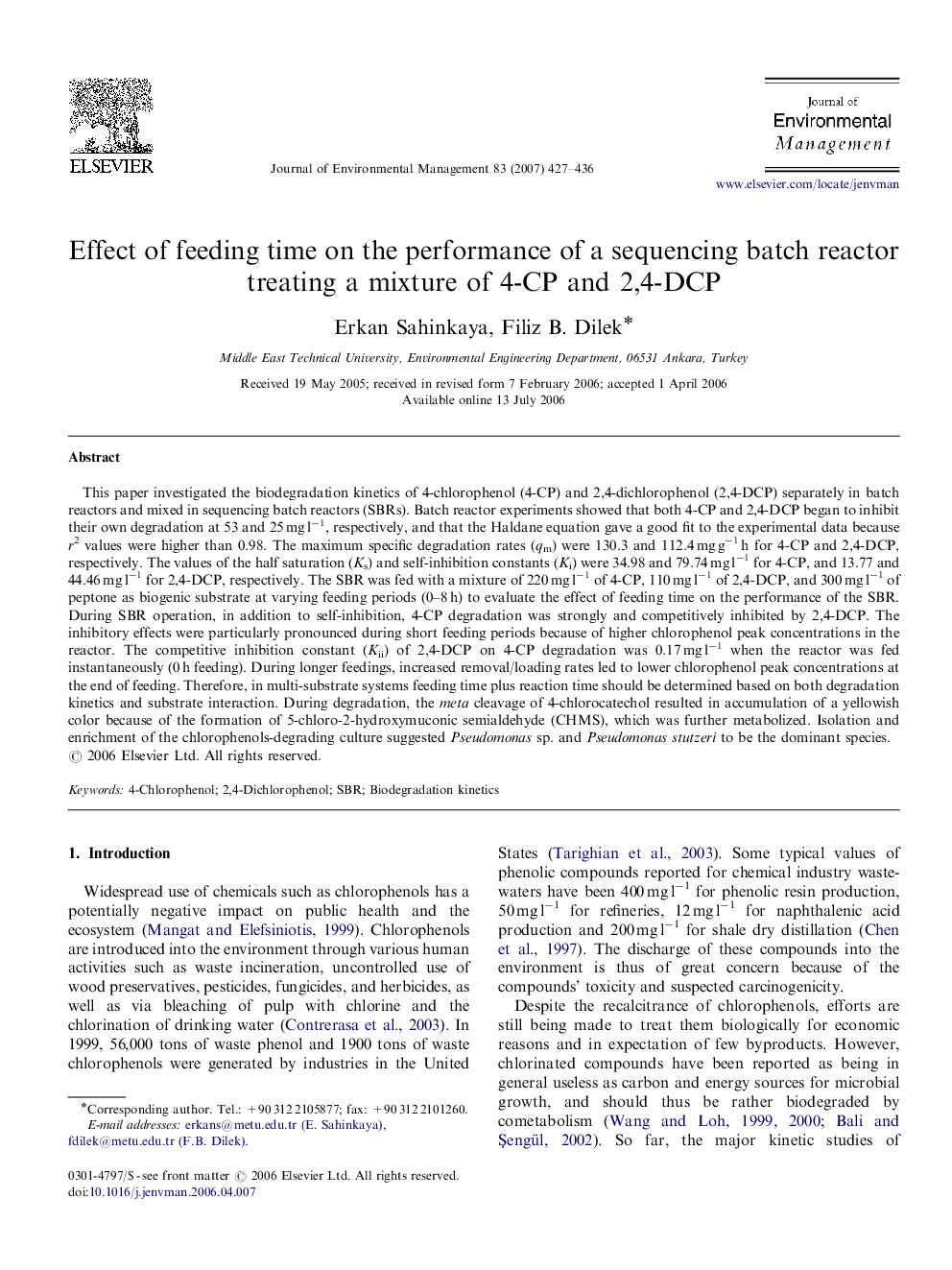| Article ID | Journal | Published Year | Pages | File Type |
|---|---|---|---|---|
| 1058724 | Journal of Environmental Management | 2007 | 10 Pages |
This paper investigated the biodegradation kinetics of 4-chlorophenol (4-CP) and 2,4-dichlorophenol (2,4-DCP) separately in batch reactors and mixed in sequencing batch reactors (SBRs). Batch reactor experiments showed that both 4-CP and 2,4-DCP began to inhibit their own degradation at 53 and 25 mg l−1, respectively, and that the Haldane equation gave a good fit to the experimental data because r2 values were higher than 0.98. The maximum specific degradation rates (qm) were 130.3 and 112.4 mg g−1 h for 4-CP and 2,4-DCP, respectively. The values of the half saturation (Ks) and self-inhibition constants (Ki) were 34.98 and 79.74 mg l−1 for 4-CP, and 13.77 and 44.46 mg l−1 for 2,4-DCP, respectively. The SBR was fed with a mixture of 220 mg l−1 of 4-CP, 110 mg l−1 of 2,4-DCP, and 300 mg l−1 of peptone as biogenic substrate at varying feeding periods (0–8 h) to evaluate the effect of feeding time on the performance of the SBR. During SBR operation, in addition to self-inhibition, 4-CP degradation was strongly and competitively inhibited by 2,4-DCP. The inhibitory effects were particularly pronounced during short feeding periods because of higher chlorophenol peak concentrations in the reactor. The competitive inhibition constant (Kii) of 2,4-DCP on 4-CP degradation was 0.17 mg l−1 when the reactor was fed instantaneously (0 h feeding). During longer feedings, increased removal/loading rates led to lower chlorophenol peak concentrations at the end of feeding. Therefore, in multi-substrate systems feeding time plus reaction time should be determined based on both degradation kinetics and substrate interaction. During degradation, the meta cleavage of 4-chlorocatechol resulted in accumulation of a yellowish color because of the formation of 5-chloro-2-hydroxymuconic semialdehyde (CHMS), which was further metabolized. Isolation and enrichment of the chlorophenols-degrading culture suggested Pseudomonas sp. and Pseudomonas stutzeri to be the dominant species.
